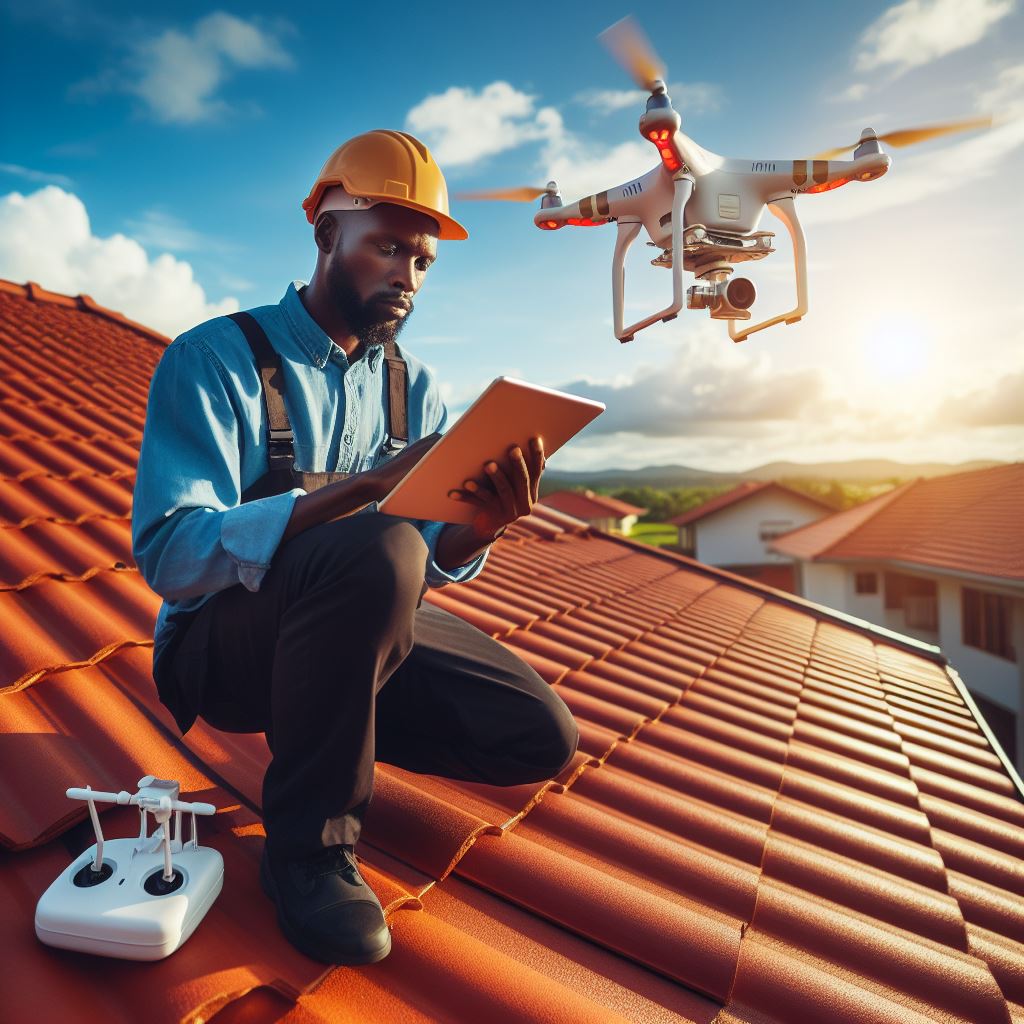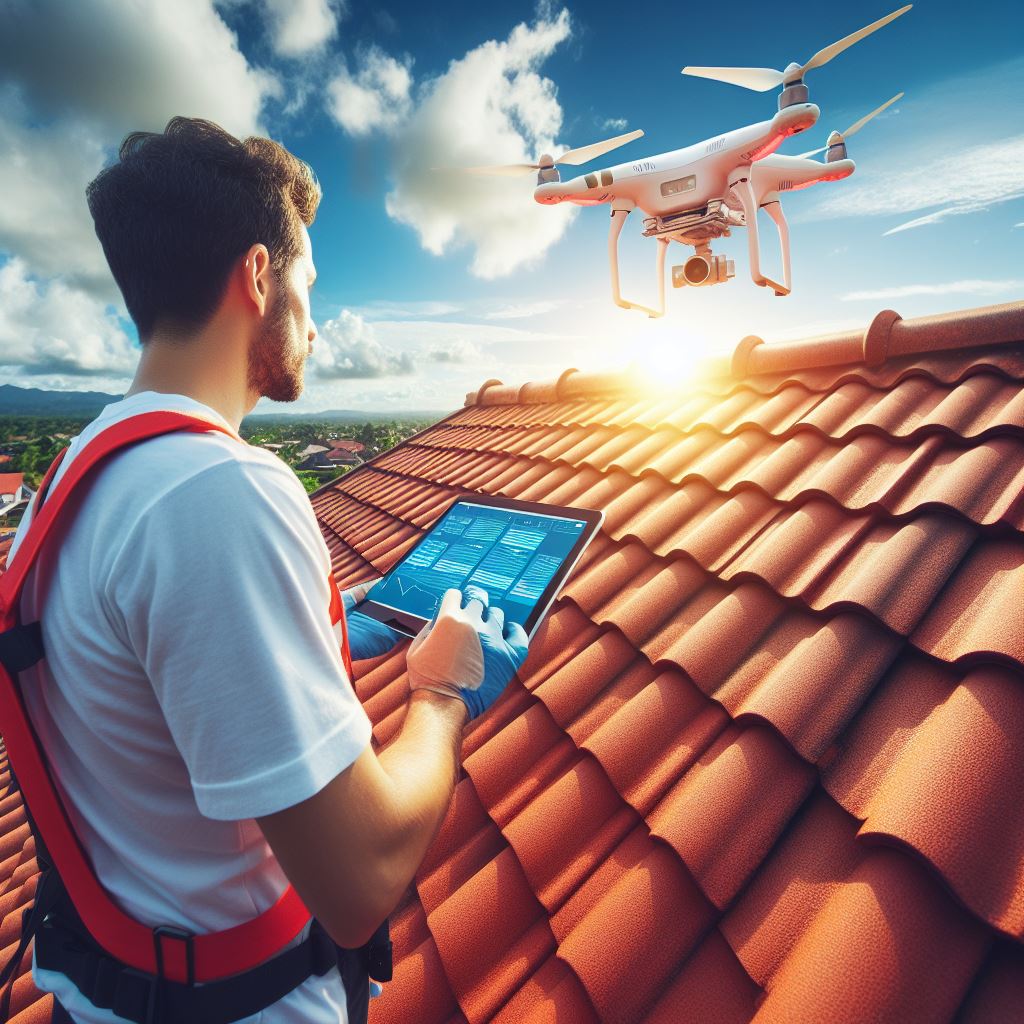Common Signs of Roof Damage to Look Out For

A roof is an essential component of any building, protecting it from the elements and providing shelter. However, over time, roofs can deteriorate and become damaged, compromising their ability to perform their function effectively. Therefore, regular roof inspections are crucial to identify any signs of damage and address them promptly. In this article, we will discuss some common signs of roof damage that you should look out for during a roof inspection.
One of the most obvious signs of roof damage is leaks. If you notice water stains on your ceiling or walls, it is a clear indication that your roof has a leak. Leaks can occur due to various reasons, such as missing or damaged shingles, cracked flashing, or clogged gutters. It is important to address leaks promptly to prevent further damage to your roof and the interior of your building.
Another sign of roof damage is missing or damaged shingles. Shingles can become loose or get blown off during severe weather conditions, leaving your roof vulnerable to water infiltration. If you notice any shingles that are cracked, curled, or missing, it is essential to replace them as soon as possible to maintain the integrity of your roof.
Furthermore, inspect the flashing around your roof. Flashing is a thin strip of metal or other material that is installed to prevent water from seeping into the joints and seams of your roof. Over time, flashing can become corroded or damaged, leading to water leaks. Therefore, it is important to check the condition of the flashing during a roof inspection and replace any damaged or deteriorated flashing.
In addition to the above, keep an eye out for signs of moss or algae growth on your roof. Moss and algae can thrive in damp and shaded areas, and their presence on your roof can indicate excessive moisture retention. If left untreated, moss and algae can cause your roof to deteriorate and lead to leaks. Therefore, it is important to remove any moss or algae growth and take steps to prevent their recurrence.
Furthermore, inspect the condition of your gutters and downspouts during a roof inspection. Clogged or damaged gutters can cause water to overflow and accumulate on your roof, leading to water damage. Ensure that your gutters are free from debris and properly channeling water away from your roof. Additionally, check for any signs of sagging or detachment in your gutters, as these can indicate structural issues that need to be addressed.
Lastly, during a roof inspection, it is important to assess the overall condition of your roof. Look for any signs of sagging or unevenness, as these can indicate underlying structural problems. Additionally, check for signs of wear and tear, such as cracked or blistered shingles, as these can compromise the effectiveness of your roof.
In conclusion, regular roof inspections are essential to identify and address any signs of damage promptly. Some common signs of roof damage to look out for include leaks, missing or damaged shingles, deteriorated flashing, moss or algae growth, clogged or damaged gutters, and overall wear and tear. By being vigilant and addressing these issues promptly, you can ensure the longevity and effectiveness of your roof in protecting your building.
Essential Steps for Conducting a Thorough Roof Inspection
A thorough roof inspection is essential for maintaining the integrity and longevity of a building. It is important to regularly inspect the roof to identify any potential issues before they become major problems. This article will outline the essential steps for conducting a thorough roof inspection.

The first step in a roof inspection is to visually inspect the exterior of the roof. This includes checking for any signs of damage such as missing or damaged shingles, cracked flashing, or loose gutters. It is important to carefully examine the entire roof surface, paying close attention to areas that are prone to damage, such as around chimneys or vents.
After inspecting the exterior, it is important to move on to the interior of the building. This involves checking for any signs of water damage or leaks. Look for water stains on the ceiling or walls, as well as any signs of mold or mildew. It is also important to check the attic for any signs of water intrusion, such as wet insulation or damp rafters.
Once the exterior and interior have been inspected, it is important to assess the overall condition of the roof. This involves checking for any signs of wear and tear, such as curling or buckling shingles, or areas of the roof that appear to be sagging. It is also important to check for any signs of aging, such as brittle or cracked shingles.
In addition to assessing the condition of the roof, it is important to check for any signs of potential problems. This includes checking for any signs of pest infestation, such as nests or droppings. It is also important to check for any signs of structural damage, such as rotting or deteriorating wood. These issues can compromise the integrity of the roof and should be addressed as soon as possible.
Another important step in a roof inspection is to check the condition of the gutters and downspouts. It is important to ensure that they are clear of debris and functioning properly. Clogged gutters can lead to water damage and can also contribute to the growth of mold and mildew.
After completing the inspection, it is important to document any findings. This includes taking photographs of any damage or potential issues, as well as making detailed notes. This documentation can be useful for insurance purposes or for future reference.
In conclusion, conducting a thorough roof inspection is essential for maintaining the integrity and longevity of a building. It is important to visually inspect the exterior and interior of the roof, assess the overall condition, check for potential problems, and inspect the gutters and downspouts. It is also important to document any findings for future reference. By following these essential steps, building owners can ensure that their roofs remain in good condition and avoid costly repairs in the future.
Importance of Regular Roof Maintenance and Inspection
Roof maintenance and inspection are crucial aspects of homeownership that should not be overlooked. Regular inspections can help identify potential issues before they become major problems, saving homeowners time, money, and stress in the long run. This article will discuss the importance of regular roof maintenance and inspection, highlighting key points that homeowners should keep in mind.

First and foremost, regular roof maintenance and inspection can extend the lifespan of a roof. A well-maintained roof can last significantly longer than one that is neglected. By identifying and addressing minor issues early on, homeowners can prevent them from escalating into more significant and costly repairs. This proactive approach can help homeowners avoid the need for premature roof replacement, which can be a significant financial burden.
Another important point to consider is that regular roof inspections can help prevent leaks and water damage. A leaking roof can lead to a host of problems, including mold growth, structural damage, and compromised insulation. By identifying and repairing any potential sources of leaks, homeowners can protect their property and ensure a safe and healthy living environment for themselves and their families.
Furthermore, regular roof maintenance and inspection can help identify and address potential safety hazards. Loose or damaged shingles, for example, can pose a risk of falling and causing injury to individuals on the property. By promptly addressing such issues, homeowners can mitigate these risks and ensure the safety of their loved ones and visitors.
In addition to these practical benefits, regular roof maintenance and inspection can also have financial advantages. A well-maintained roof can enhance the overall value of a property. When it comes time to sell, potential buyers will appreciate a roof that is in good condition and will be more likely to offer a higher price. Moreover, insurance companies often require proof of regular roof maintenance and inspection to provide coverage. By staying on top of these requirements, homeowners can ensure that they are adequately protected in the event of any unforeseen damage or accidents.
It is important to note that roof maintenance and inspection should not be limited to just the exterior of the roof. The interior of the property should also be inspected for signs of water damage, such as stains on ceilings or walls. These signs can indicate a leaky roof or other issues that need to be addressed promptly.
To ensure a thorough and effective roof inspection, it is recommended to hire a professional roofing contractor. These professionals have the knowledge, experience, and tools necessary to identify potential issues that may not be apparent to the untrained eye. Additionally, they can provide expert advice on the best course of action to address any problems that are discovered.
In conclusion, regular roof maintenance and inspection are essential for homeowners to protect their investment and ensure the safety and comfort of their property. By addressing minor issues early on, homeowners can prevent them from escalating into major problems and costly repairs. Moreover, regular inspections can help identify potential safety hazards and prevent leaks and water damage. By staying on top of roof maintenance and inspection, homeowners can enjoy the peace of mind that comes with knowing their roof is in good condition and their property is well-protected.

[…] A roof is one of the most important components of a building, providing protection from the elements and ensuring the structural integrity of the entire structure. Regular roof inspections are crucial to identify any potential issues and prevent costly repairs or replacements. To conduct an effective roof inspection, it is essential to have the right tools at your disposal. In this article, we will discuss the top five must-have tools for effective roof inspection. […]